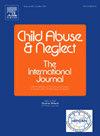衡量中国、刚果民主共和国和印度尼西亚青少年之间安全、稳定和培育的关系:与同伴暴力经历的关系
IF 3.4
2区 心理学
Q1 FAMILY STUDIES
引用次数: 0
摘要
安全、稳定和养育的关系(sssnrs)是儿童健康发展的重要组成部分。然而,关于sssnr的测量以及这些概念是否与同伴暴力有不同的关联,有一些数据。目的研究了三个国家青少年中sssnr的两种测量方法(域和潜在类分析(LCA))及其与同伴暴力受害和犯罪的关系。参与者和设置三个纵向数据集(波1 -波3)来自刚果民主共和国(DRC)、中国和印度尼西亚(n = 6068)。有目的地选择在第一次浪潮期间生活在城市贫困社区的10-14岁的青少年。方法采用多变量logistic回归对每个位点进行横断面和纵向分析,研究了sssnr概念化(域和LCA)与同伴暴力经历之间的关系。结果我们发现了不同地点的相似点和不同点。不同站点的类结构(通过LCA)不同。所有站点都具有“高sssnr”等级。在印度尼西亚和上海,存在“低社交信噪比”阶层、“高父母因素”阶层和“高社会凝聚力以外的社交信噪比”阶层。在印度尼西亚和金沙萨,在两个概念(领域和LCA)中都发现了与同伴暴力的关联。在上海,只有潜在阶层与同伴暴力经历有关联。一般来说,在第一波中,ssr对同伴暴力有保护作用。结论lca能更好地理解ssr。特别是,积极的家庭关系在减少同伴暴力经历方面发挥着关键作用。制定方案需要跨部门合作,包括家庭和社区,以防止同伴暴力。关键从业者消息。相对于基于域的概念化,LCA提供了对SSNR的细致理解。收集不同的类别可以为政策和规划提供关于哪种因素在预防和/或减少同伴暴力经历方面最具影响力的想法。sssr对三个站点的同伴暴力结果具有保护作用。父母在减少受害和犯罪方面都得到了强调。旨在解决青少年暴力问题的干预措施应考虑到父母和青少年对研究过程的参与。本文章由计算机程序翻译,如有差异,请以英文原文为准。
Measuring safe, stable and nurturing relationships among adolescents in China, Democratic Republic of Congo and Indonesia: Association with peer-violence experiences
Background
Safe, stable, and nurturing relationships (SSNRs) are an essential component of healthy child development. However, there is a scintilla of data on the measurement of SSNRs and whether these conceptualizations have different associations with peer-violence.
Objective
We examined two ways of measuring SSNRs (domains and latent class analysis (LCA)) and their relationship with peer violence victimization and perpetration among adolescents across three countries.
Participants and setting
Three longitudinal datasets (Wave 1–Wave 3) were used from Democratic Republic of Congo (DRC), China, and Indonesia (n = 6068). Adolescents were purposefully selected if they were 10–14 years old and living in urban poor communities during Wave 1.
Methods
We examined associations between both SSNR conceptualizations (domains and LCA) and peer-violence experiences cross-sectionally and longitudinally using multivariable logistic regressions for each site.
Results
We found similarities and differences across sites. The class structure (through LCA) differed across sites. All sites had a ‘high SSNR’ class. In Indonesia and Shanghai there was a ‘low SSNR’ class, ‘high parental factor’ class, and ‘high SSNR except social cohesion’ class. In Indonesia and Kinshasa, associations with peer-violence were found for both conceptualizations (domain and LCA). In Shanghai, only the latent classes showed association with peer-violence experiences. In general, SSNRs were protective against peer-violence experiences during Wave 1.
Conclusion
LCA provides a more subtle understanding of SSNRs. In particular, positive family relationships play a critical role in reducing peer violence experiences. Developing programs require cross-sectoral collaborations that involve families and communities to prevent peer-violence.
Key practitioner messages
- 1.LCA provides a nuanced understanding of SSNR versus a domain-based conceptualization. Capturing the different classes could provide ideas on which factor is most influential in preventing and/or reducing peer-violence experiences for both policy and programming.
- 2.SSNRs were protective for peer-violence outcomes cross-sectionally across all three sites. Parents were highlighted in reducing both victimization and perpetration. Interventions aiming to address violence among adolescents should consider parent and adolescent involvement in the research process.
求助全文
通过发布文献求助,成功后即可免费获取论文全文。
去求助
来源期刊

Child Abuse & Neglect
Multiple-
CiteScore
7.40
自引率
10.40%
发文量
397
期刊介绍:
Official Publication of the International Society for Prevention of Child Abuse and Neglect. Child Abuse & Neglect The International Journal, provides an international, multidisciplinary forum on all aspects of child abuse and neglect, with special emphasis on prevention and treatment; the scope extends further to all those aspects of life which either favor or hinder child development. While contributions will primarily be from the fields of psychology, psychiatry, social work, medicine, nursing, law enforcement, legislature, education, and anthropology, the Journal encourages the concerned lay individual and child-oriented advocate organizations to contribute.
 求助内容:
求助内容: 应助结果提醒方式:
应助结果提醒方式:


